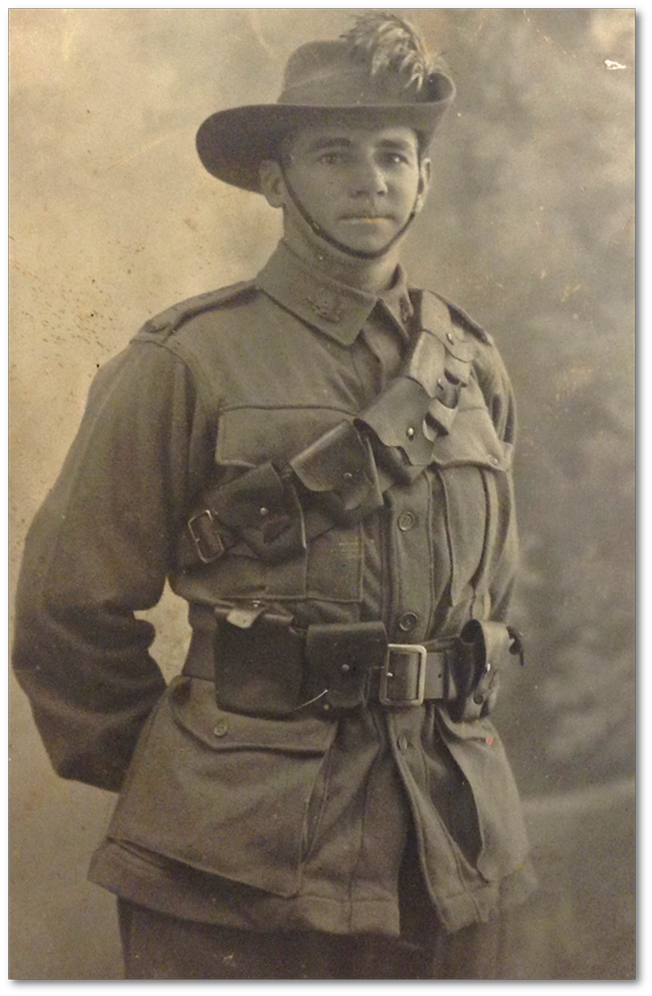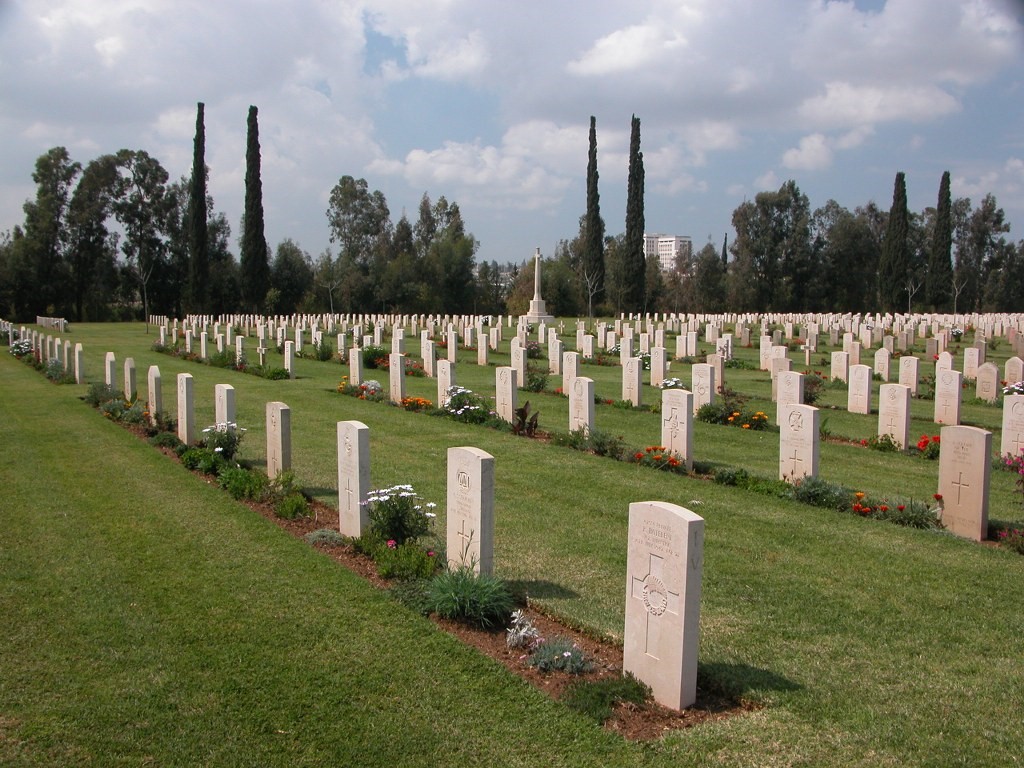The service career of Wilfred (also Wilfrid) Mapon Chaille lasted over three and a half years, during which time he saw action on Gallipoli and through the Sinai and Palestine campaigns, until losing his life near Jerusalem in July 1918. Wilfred was an early enlistment, signing up at Enoggera on 7 November 1914. He was born at Esk in the Brisbane Valley where his family had the property “Bonny Doon”. He gave his occupation as grazier and his NOK his father James H. Chaille. His mother wrote to the army several times signed as Mrs C. Chaille of Esk. The family also used an address in Gregory Terrace in Brisbane. Wilfred was educated at the Toowoomba Grammar School (1906-1908); his family owned property on South Street in nearby Rangeville, Toowoomba.
At the time of his enlistment Wilfred Chaille was 23 years old. He was a short man of just 5’4”, a couple of inches below the minimum height of the 1914 enlistments, but, presumably his riding skills overcame the obstacle of height. He was described as having a fresh complexion, brown eyes and dark brown hair and weighed 126 pounds. He gave Presbyterian as his religious denomination.
Wilfred was posted to the 5th Light Horse (a largely-Queensland unit) and sailed from Sydney on the transport A34 Persic on 21 December 1914. He was still in Egypt on 25 April and later landed on the Peninsula as a reinforcement – to be wounded in action with a “gun-shot wound, left hand and chest” on 28 June 1916. After evacuation and hospitalisation he rejoined his unit on 2 October 1915.
After the Gallipoli withdrawal Wilfred served with the 5th L.H. throughout the following year when the AIF was divided between the infantry divisions that were sent to France and the mounted troops, who were destined to fight in the Middle East. Throughout 1916 and 1917 Wilfred was with his unit in the battles in Sinai and then the eight-month siege of the city of Gaza where they were involved in street-by-street fighting. The 5th LHR fought at all three battles at Gaza as the British army sought to wrest control of the strategic city from the Turks. After the occupation of Gaza, in November 1917, the 5th LHR was sent east to the Jordan Valley, taking part in the attacks at Amman and Es Salt. Wilfred was made a sergeant on 21 November 1917.
Near Jerusalem, Wilfred Chaille was killed in action on 14 July 1918. He was buried at the Wadi Manahan Cemetery the same day. From this time the campaign in the Middle East progressed rapidly. Having seen the worst of the fighting the Australian mounted troops and their allies drove on to Damascus before the Armistice in November. At home Wilfred’s parents negotiated their way through the documents pertaining to a fallen soldier. The correspondence consists of the simple, moving letters of the grieving families and the authorities. For example, Wilfred’s father wrote in May 1921 on the relocation of his son’s grave:
Dear Sir
Yours of the 4th inst to hand for which I thank you. Can you tell me if they have moved the body of my dear son No. 530 Sergeant W.M. Chaille 5th L. Horse from the grave in the Jordan Valley to the grave in Jerusalem? I have photos of the grave in the Jordan Valley and shall be very pleased to get the photos of the other. Thanking you again….
The army’s Base Records Office replied:
Dear Sir, I have . . . to state the remains of your son, the late No. 530 Sergeant W.M. Chaille, 5th Light Horse Regiment, have been exhumed from the Wadi Manahan, Jordan Valley, and re-interred in the Jerusalem Military Cemetery, Palestine. This was carried out with every measure of reverence and care in the presence of a Chaplain. Yours faithfully . . . .
In the two years after September 1921 Wilfred’s family received his medals and the commemorative plaque and scroll. During those two years Mrs Chaille informed the army that her husband had died. She conducted correspondence over the wording on the headstone of her son’s grave when the Imperial War Graves Commission prepared the permanent cemetery in Jerusalem. Personal inscriptions on war graves were limited to 66 letters, including spaces between words at a cost of “threepence-ha’penny per letter”. Today Wilfred lies in the Jerusalem War Cemetery (grave J.28).
Towoomba Grammar School records state that he started school on 23 July 1906 and left on 16 December 1908. The School Magazine of May 1919 reports, ‘CHAILLE, WILFRED MATON, 5th Australian Light Horse. – At school 19o8 -I0. Killed in action in Palestine July 14, 1918, age 26. Son of Mr. and Mrs. W. Chaille, of Esk.’
The Queensland State Library Website, in their Guest Blogger, Qld Faces of WW1. has this information on Chaille
PAT CHAILLE, 5TH LIGHT HORSE, Marg Powell | QANZAC 100 Content Technician State Library of Queensland
Sergeant Wilfred (Pat) Mapon Chaille, 5th Light Horse Regiment, Gallipoli, Palestine.
Wilfred Mapon Chaille, known affectionately as Pat, served in the First World War with the 5th Light Horse Regiment, and was engaged in a range of operations, including Gallipoli. Pat hailed from the town of Esk, the son of James and Charlotte Chaille (nee Woollett). Prior to enlisting in November 1914, he had worked as a stockman on his father’s property “Blinkbonnie”. This experience and country upbringing made Pat a natural candidate for the famed Light Horse; he departed aboard HMT Sicilia only a few months later.
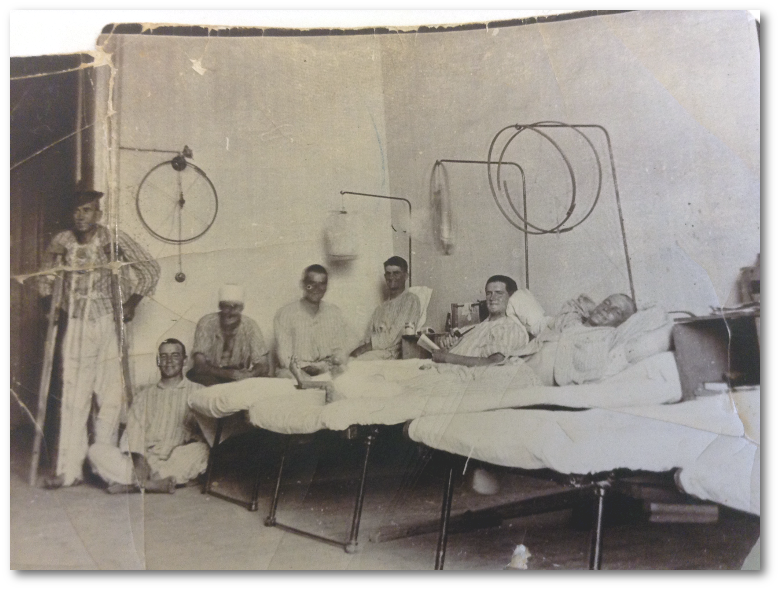
No. 8 Ward, Ghezireh Palace, (No.2 AGH) Cairo – “Pat Munro on floor”
He first saw action at Gallipoli, where he was wounded during operations at Chatham’s Post above Anzac Cove, receiving a gunshot wound to his chest and hand. He was evacuated to No.2 Australian General Hospital, in Ghezireh, Cairo.
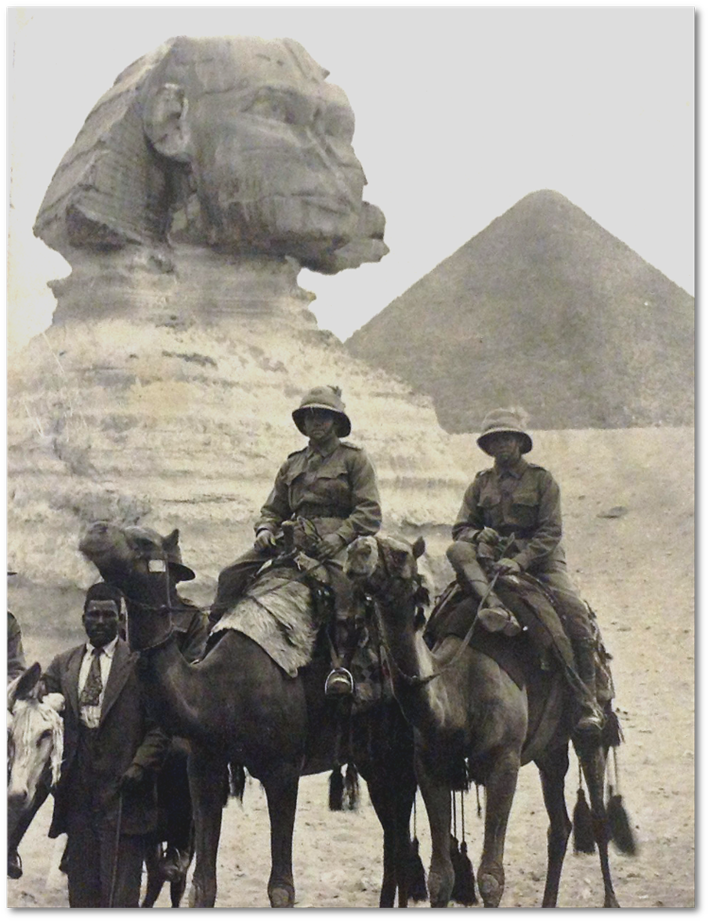
Enjoying the sights of Cairo, 1915
Chaille returned to duty on the Gallipoli Peninsula in October 1915, by then his unit was occupying Wilson’s Lookout and experiencing gruelling conditions and ferocious attacks from the Turkish army. The Unit Diary for the time records – “the Turks used very extensively Broomstick Bombs, on some days firing as many as 200 of them … in addition to the bombs … they used 3 1/2 inch cartridge cases filled with dynamite, 30lb Howizter shells on the ends of rods … “
Chaille rose through the ranks of the AIF and once his regiment had been evacuated from Gallipoli and reformed in Egypt he was promoted to Lance then Corporal by June 1917. Chaille was once again hospitalised with illness for twenty days, most probably for Malaria which was very prevalent amongst the troops serving in the Jordan Valley. He was promoted to Sergeant a month after being discharged from hospital, and in the following year (1918) was sent to the School of Instruction in Zeitoun, which served to train N.C.O.s, and specialist soldiers such as machine gunners, and signallers.
Tragically only ten days after returning from the School of Instruction, he was killed in action after encountering German snipers near the river Jordan, in what was then Palestine. He was initially buried at Wadi Manahan in the Jordan Valley, and amongst the photos donated to the State Library of Queensland are two of the small grave and simple marker that were placed there.
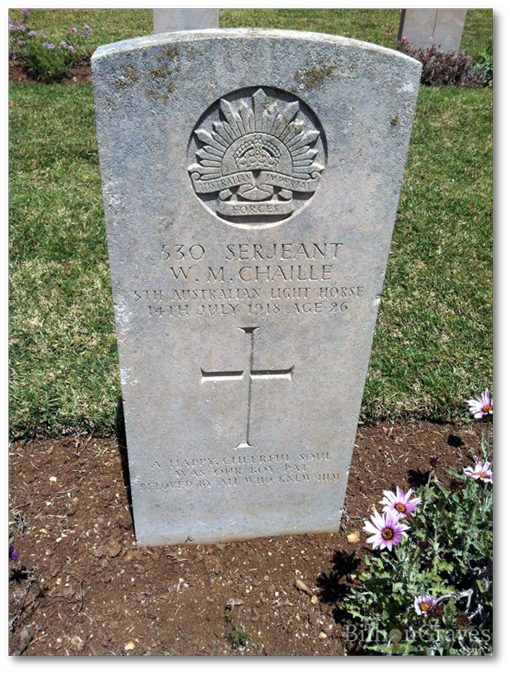
Chaille’s Grave
In 1920, his body was exhumed and placed in the Jerusalem War Cemetery, Israel. His final gravestone bears the touching inscription …
“A happy, cheerful soul was our boy Pat. Beloved by all who knew him.” Four Light Horse mates
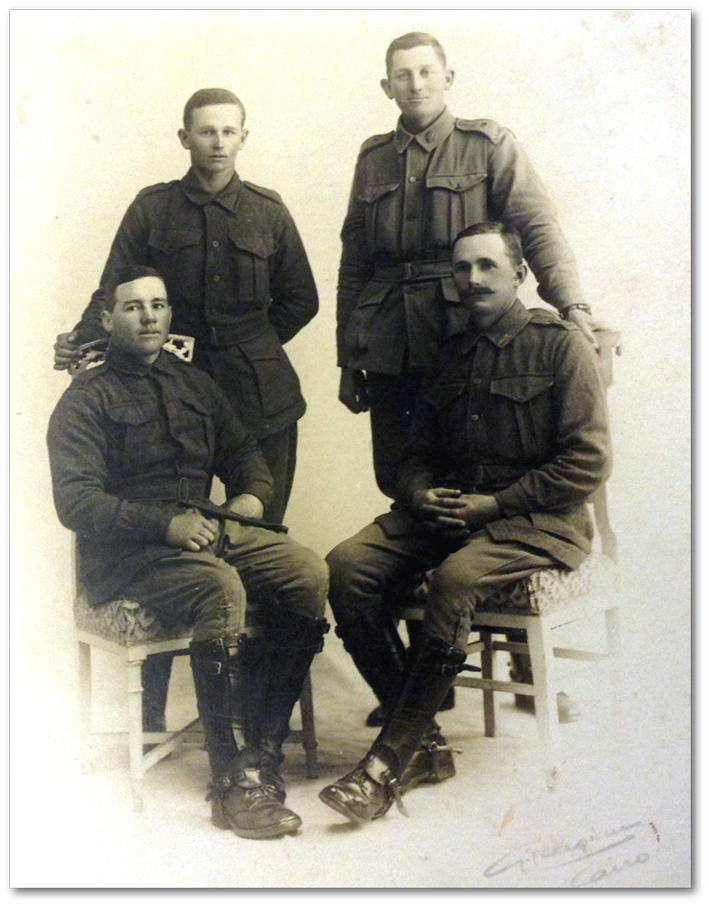
Pat Chaille, front left, with three pals, Cairo
By all accounts Pat was a likeable man, and can be seen in a number of his photos laughing with friends. Pat’s father died just five years later, leaving Pat’s mother, Charlotte and five siblings Harold, Estelle, Leila, Mabel and Ralph.
We are very grateful to the family of Pat Chaille for donating this small, but no less valuable collection of photographs and postcards. We would also like to thank our guest Blogger and Researcher, Year 12 student James Francis.
External Links
Australian National Archives Military Records
AWM4 Australian Imperial Force Unit War Diaries Item 10/10/11 5th LHR Nov 1915


